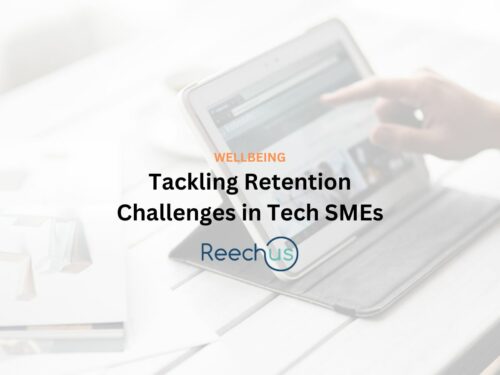Effective Strategies for a Thriving Workforce No company wants to lose their best players. The cost of recruiting and...
Wanting to export software and SaaS technology? Proper preparation will prevent poor performance
Software and SaaS (software as a service) are, on the face of it, portable and thus perfect for export, so it’s tempting to leap straight in and start making the supplies. In practice, time spent planning and preparing is time well spent. In this article we headline key factors to consider.
Assess the market
It’s a trite point in some ways! Overseas markets can be difficult to access and exploit, even if you have a clear sales or supply opportunity that gets you past the existing competitors in the market.
Local laws may be a factor and, in some locations, cause an obstruction. These may require change to your product, change the risk profile (eg in locations that lack intellectual property (IP) laws or reliable enforcement measures), or create an unfamiliar commercial landscape. Take local law advice to understand the landscape.
But your assessment of the market and the real opportunity for export shouldn’t be limited to sales and legal due diligence. Talk to government and public bodies in and around your target locations and, if possible, get war stories from UK and EU-based businesses that are already supplying software or SaaS in the locations about how they are finding the trading environment.
Batten down the (IP) hatches
Software and SaaS are IP rich. If your target locations provide legal protection for IP, establish measures to benefit from the protection before you export. Where registration is available, obtain the registrations. If registration is not available, offers less protection than you’d like, or is a lower priority for you than getting into the market, what is your ‘Plan B’? Measures to consider may include contractual protection, and technical means to disable and/or extract product from specific contexts or the entire market.
Your protective mindset might need to start at home. Before embarking on a programme of IP registration at home or abroad, you should ensure that your organisation does actually own the IP in its software and SaaS products.
If parts were built by the founders, contractors or established suppliers you should ask these questions:
- Has the IP been transferred to ‘mother ship’?
- If IP hasn’t been transferred, can you re-build in a way that does not infringe the original material?
- If having registered IP in the UK/ EU will assist with an application to register in other jurisdictions, do you have all the relevant UK/ EU registrations in place?
The protective mindset should also take account of licensed material. Whether the material is static (eg open source or other software that you distribute or install with product, or that drives certain SaaS functions), or dynamic (eg data or services that you use or rely on for product), you need to ensure the licences are in place and that they cover your target jurisdictions and purposes of use. If your licences pre-date your export business plan, chances are that the licences and related supply obligations need to be extended.
Prepare the product
You might need to localise product (new IP that may need to be protected). It’s important to bear in mind how deeply ‘localisation’ can cut. Language localisation is a first step, but significant changes to the user interface and experience may be required to take account of local culture, customs and ways of working in your target market. Shallow localisation could result in poor traction in the market.
Consolidating the ‘home’ version of your product may also be a key task. If your market assessment reveals that similar laws such as on product certification (where applicable), or data protection apply in both your home and target jurisdictions, ensuring that your home certifications and built-in compliance measures are in place and up to date may assist your position in both markets.
Depending on how your product uses and transits personal data, you might need to think very carefully about your choice of locations for hosting. Geo-fencing data to keep it in certain jurisdictions and out of others may simplify product compliance but creates added complications in terms of demanding changes to product, choice of suppliers and supply chain locations. As well as deviations from your usual implementation model.
Export and import control
Software and SaaS is subject, in many jurisdictions, to controls on export and import. In some jurisdictions, even non-personal data is subject to controls. Controls apply in the UK and may well apply in your target market (and in any other jurisdictions where you draw technology or services from for your products).
Even if your chosen method of supply means the responsibility falls (or can be contracted to) your customer, you should check to confirm that the required exports and imports are legally possible. Also ensure you know what’s involved so that you can either guide or reassure the customer.
Price and tax
Chances are that, to enter your target market, you must trade in an unfamiliar currency. With such trade comes:
- Exposure to exchange rate fluctuations
- A need to comply with local sales laws
- Taxes according to local laws and rates
It may be necessary for you to establish a transfer pricing policy to satisfy taxation authorities in both your home and target locations.
Prepare your delivery mechanism
How will you get product from the UK or EU to the target location? There will be lots of options to consider here. They are likely to include:
- You supply from your existing ‘home’ location by direct sales and supply.
- You partner with an existing organisation in your target market, eg using a marketing/ introduction model, simple purchase and re-sale, or value added resale.
- You establish a new corporate entity in your target market or in a closely related jurisdiction that gives access to the target market.
- In each case, you use a carefully planned mix of local and international supply chain.
There are pros and cons to each option and no standard right answer. For example, you may fare better in some countries if you are seen to bring benefits to the local economy and supply chain, rather than merely extracting business. That would rule out the direct sales option. You then face significant investment in local relationships and product and business supply chains, and significant exposure to local law risks identified in your market assessment. The risks may include unprotective or absent IP laws, difficult choices about which law to apply in contracts, and difficulties with IP or contract enforcement.
Plan your exit
The means of exit should be built in as part of your programme of entering the new market. If your target market is ‘lite’ on legal protection of IP, you will want robust ways to extract your product from individual customers and users, supply chain participants, and indeed from the local market. Fast. In any case, your supporting arrangements, including UK or EU supply and licensing contracts (so you can reduce volumes under those contracts, or terminate them) should also be flexible enough to allow exit.
Summing up
Perhaps surprisingly, it’s a mistake to focus too much on the target market. It’s equally important to be well-prepared at home, and in your home-to-target-market supply chains, particularly in relation to IP management, supply contracts and licences.
When it comes to focusing on the target market, do your homework. Take local law advice as part of your preparation, so you understand the pros and cons and can make an informed decision and a suitable type and level of investment. Try to work through networks of trusted partners and advisers when seeking new partnerships. Prepare your product, and the technical support proposition, in ways that will maximise traction in the target market. Choose your operating and supply locations and legal jurisdictions carefully. Be willing to integrate with the local supply chain and to share economic benefit. Plan for the best but build a robust exit into your mode of entry, at every level.
Our content explained
Every piece of content we create is correct on the date it’s published but please don’t rely on it as legal advice. If you’d like to speak to us about your own legal requirements, please contact one of our expert lawyers.
Tackling Retention Challenges in Tech SMEs
Innovative companies take centre stage at Cambridge Tech Week 2024
Discover Cutting-EdgeTechnology at Cambridge Tech Week’s Innovation Alley Exhibition – Tues 10th September 2024,...
Epos Now Joins the Prestigious Unicorn Council
Epos Now announces its induction into the esteemed Unicorn Council, an exclusive group of privately held startup...




